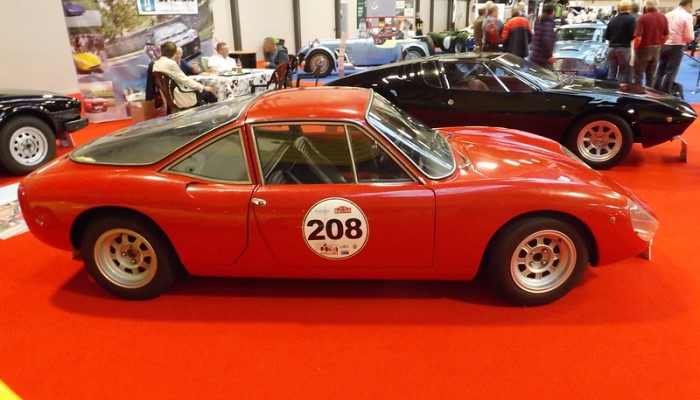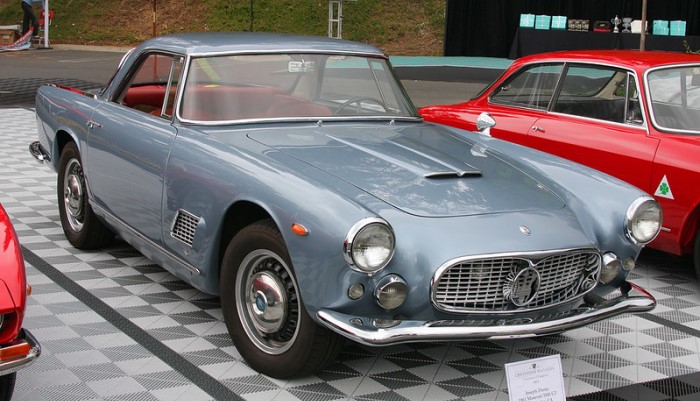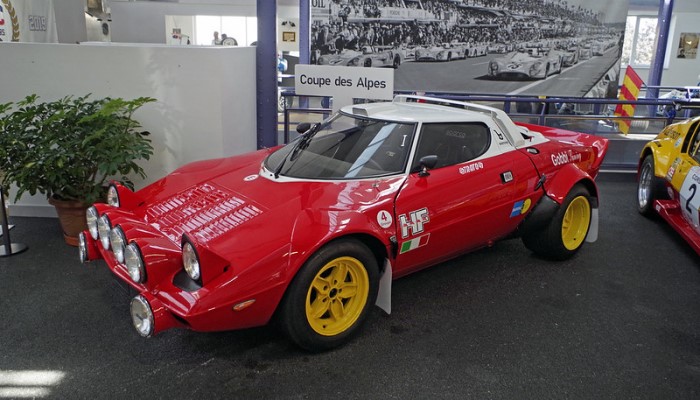De Tomaso Mangusta
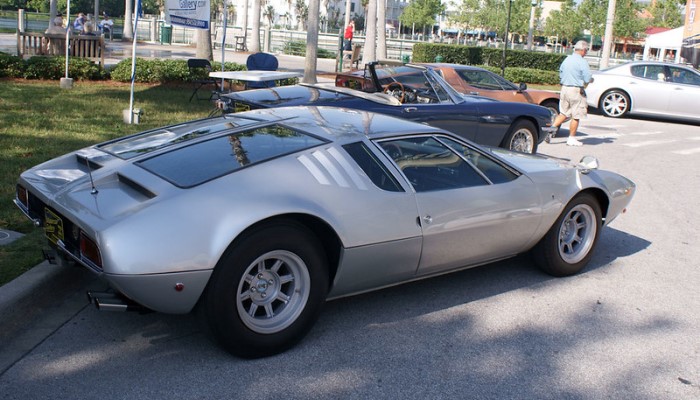
Photo: "De Tomaso Mangusta 1970 RSideRear CECF 9April2011 (14620986583)" by Valder137
Unique GT Atmosphere
After leaving Argentina for political reasons, racer Alejandro De Tomaso first settled in the United States, where he married a rich American woman, Elizabeth Haskell. In the late fifties, he moved to Italy, in the city of Modena, and in 1959 opened a small factory for the production of racing cars there.
In the early sixties, De Tomaso attempted to move to small-scale production of road cars, but the Vallelunga model with a spinal frame, independent suspension and a 90 cid (1.5 L) Ford Cortina engine located in the base did not arouse any interest among buyers.
In 1966, while continuing to work on a car for public roads, Alejandro De Tomaso created an enlarged version of the Vallelunga chassis for a 288 cid (4,728 cc) Ford V8 engine and installed an experimental body for Giorgetto Giugiaro from the body company Ghia.
First shown at the 1966 Automobile Salon in Turin under the name Ghia Mangusta, and car made a stunning impression on the public. Wide and low, with a simple front grille and twin headlights, with cast wheels, and unusual swing flaps of the engine compartment in the style of Gullwing.
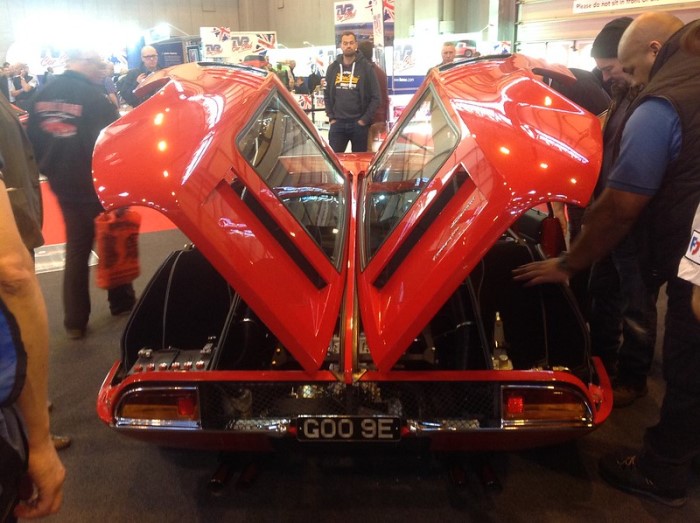
Photo: "De Tomaso Mangusta (1967)" by andreboeni
In 1967, De Tomaso launched the Mangusta model into production. The serial model differed little from the exhibition prototype. Only the fiberglass body was replaced by steel, with the covers of the engine and luggage compartments of aluminum alloy.
Specifications
Despite the magnificent leather details typical of Italian super-cars, the De Tomaso Mangusta is a real racing car. With a weight of 1,185 kg, it has a 305 HP engine, a 5-speed ZF gearbox in the main gear unit, almost identical to the transmission of a Ford GT40.
The car's top speed is 155 mph (250 kph), and acceleration to a 60 mph (96 kph) is under 6 seconds (5.7 s to be exact). There is an opinion about the insufficient rigidity of the spinal frame of the car, which, of course, should have affected its handling. However, no complaints about this have been reported.
Engine Specs
| Engine Type | V8 |
| Layout | Middle engine, RWD |
| Displacement | 288 cid (4.728 cc) |
| Power | 305 hp |
| Torque | 531 Nm |
| Power/Weight | 257 hp / Tone |
Performance
| 0-60mph (0-96kph) | 5,7 s |
| 0-100mph (0-160kph) | 13,2 s |
| 1/4 mile | 15,1 s |
| Top Speed | 155 mph (250 kph) |
In 1970, due to new vehicle safety requirements in the United States, De Tomaso was forced to make some changes to the design: install a new 305 cid engine (5.0-liter) with 220 HP, which reduced acceleration speed and time, and changed front lights that did not improve the appearance of the car.
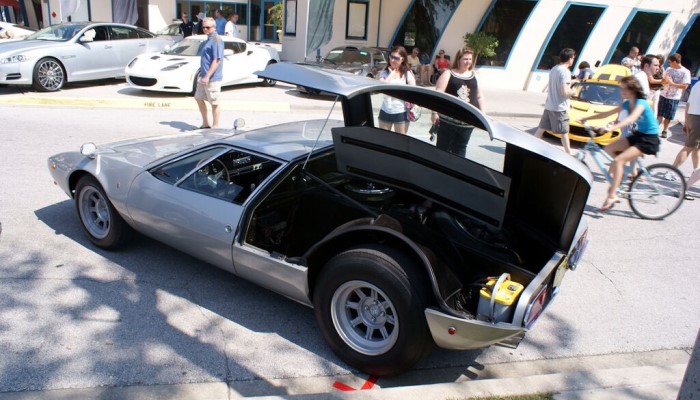
Photo: De Tomaso Mangusta 1970 LSideRear open CECF 9April2011 (14414497397)" by Valder137
Four years after the start of production, the Mangusta model was discontinued. In total, 401 magnificent cars with the logo of De Tomaso Mangusta were built. About 250 vehicles were intended for the US market.
Mangusta’s Interior
The interior of the De Tomaso Mangusta is nothing short of breathtaking. Stepping inside the car, you're immediately struck by the attention to detail and craftsmanship that's gone into creating this masterpiece.
The first thing to catch your eye is the sleek dashboard, which is adorned with a host of dials and gauges that are as functional as they are stylish.
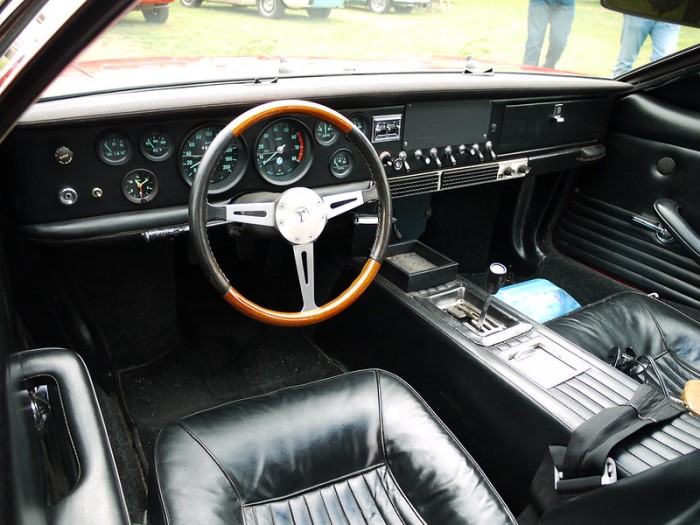
Photo: Detomaso Mangusta" by | El Caganer - Over 8.5 Million views!
The driving position is low and set back, giving you an excellent view of the road ahead. The seats are made from the finest Italian leather and are incredibly comfortable, making even long journeys a joy. But it's not just the seats that are leather-clad; the entire interior is upholstered in the same sumptuous material.
The door panels, the dashboard, and even the steering wheel are all covered in soft, supple leather that gives the cabin a truly luxurious feel. The attention to detail is apparent in every corner of the interior, with chrome accents, polished aluminum, and high-quality plastics combining to create a sense of elegance and sophistication.
Even the smallest details, like the door handles and air vents, are beautifully designed and crafted. Overall, the interior of the De Tomaso Mangusta is a celebration of Italian design and engineering. It's a space that feels both refined and practical, and once you've experienced it for yourself, it's hard to imagine driving anything else.
The Roar of the Mongoose
As the De Tomaso Mangusta races down the road, the sound alone is enough to turn heads. The throaty roar of the engine is unmistakable, echoing through the streets with a deep, powerful growl.
It's the kind of sound that demands attention, a call to action for any enthusiast within earshot. The rumbling exhaust notes reverberate through the air, heralding the arrival of this sleek and stunning machine.
With an engine that's as impressive as its style, the De Tomaso Mangusta is a true automotive masterpiece that's impossible to ignore.
De Tomaso Mangusta in Today's Market
Today, the De Tomaso Mangusta still holds a special place in the classic car market. Its rarity and timeless design continue to attract buyers and collectors alike, with a well-maintained piece being worth up to $250,000.
However, owning a Mangusta is not for the faint-hearted. With only 401 models produced, finding a suitable one can be a challenging task. And with its complex design and significant performance issues, maintenance and restoration work can be costly and time-consuming.
But for those who are up for the challenge, the De Tomaso Mangusta is a worthwhile investment that combines jaw-dropping design and exceptional performance. It's a car that has stood the test of time and still remains a true classic.
How Mangusta "Got a Role" in Kill Bill 2
Tarantino, not particularly keen on cars, had initially imagined that the character had to ride in a Porsche, but the production felt that a Porsche would be too much commonplace.
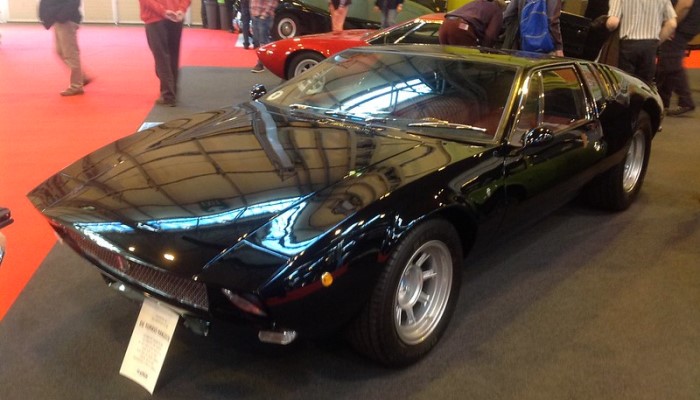
Photo: "De Tomaso Mangusta (1967)" by andreboeni
Caradine, a big car enthusiast, also insisted on having something else, as he is not much of a Porsche fan. Miramax then asked Cadillac for one of his Cien prototypes, but the brand refused, judging the actor too "old" to associate it with the image of his model!
Then the movie production offered De Tomaso Mangusta from 1969, chassis number 8MA784.
Final Word
When you have tasted the unique charm of De Tomaso, it is difficult not to succumb to the temptation of this Mangusta! Indeed, despite its series mechanics of an insolent technical simplicity, the De Tomaso offers a breathtaking line, outstanding performance, insolent road holding and overall, a very strong emotional power!
To discover with interest, to buy with caution, and to consume without moderation…

Unique Car Zone Team
A group of several fans of everything that moves on four wheels, a few article creators, a couple of marketing strategists, designers, web developers, and lots of coffee.




